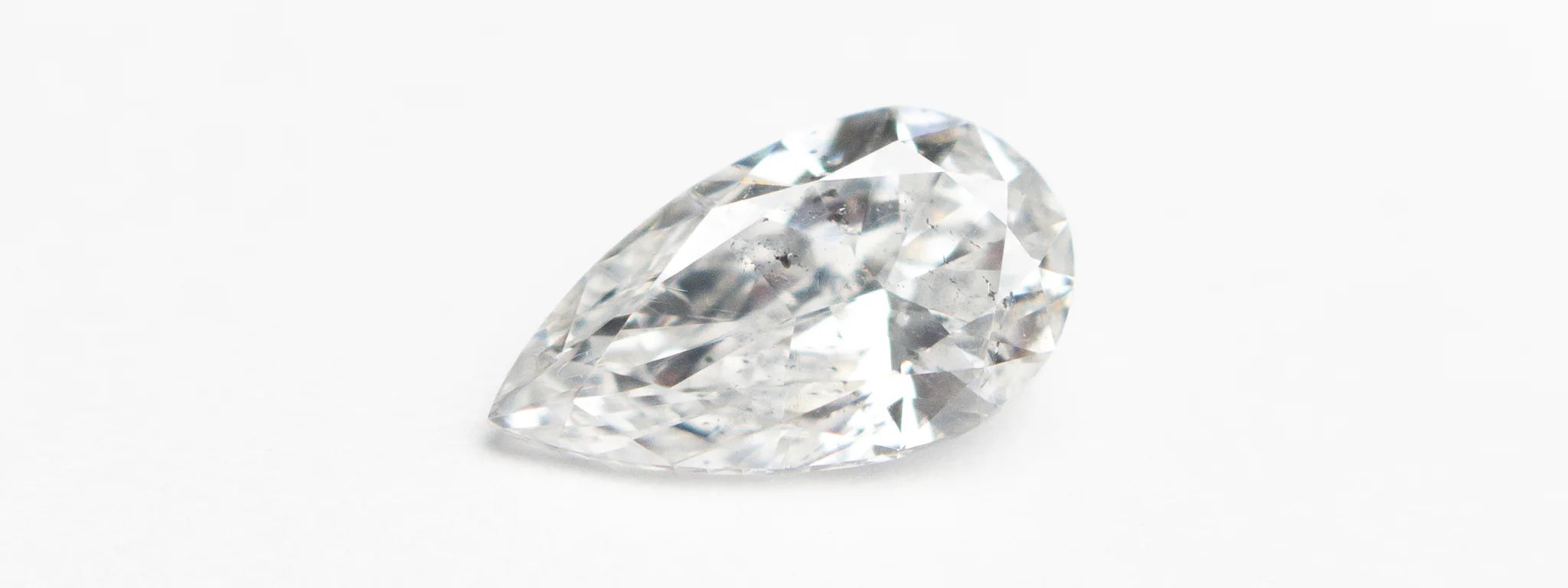Stones
Diamonds
We love working with all of types of stones, but diamonds are our passion. Not only do we work with brilliant cut diamonds, but also rose cut and rustic diamonds as well.
There's a lot to learn about diamonds, and we're here to help!
Brilliant Cut Diamonds
Brilliant cut diamonds are the "classic" style you think of when envisioning a diamond. These are graded using 'the 4 C's': color, clarity, cut, and carat. While our customers each have different goals and priorities when shopping for jewelry—including what feels beautiful and comfortable to them— it’s good to be acquainted with the 4 C’s before making a diamond purchase, especially if the diamond is a brilliant or fancy cut stone.
A quick note: the 4 C’s were established in the industry to help determine the value of a diamond. While they are important and should definitely be considered, we believe that beauty is in the eye of the beholder. One person may want something that's as white an flawless as possible, while another may find beauty in inclusion and special color characteristics.

The 4 C's
Cut
The Cut of a diamond is exactly as it sounds: it’s referring to how the rough gem was sliced and faceted to increase its brilliance. It also means how well the stone was cut, and the type of proportions it has. There are a number of cuts to look into when researching engagement rings, and all are great choices! From a round brilliant cut (the diamond you’ve most likely seen), to ovals, emerald cuts (cut with steps) to marquise, there are many stunning cuts to choose from. We suggest going with the shape you gravitate most toward. From there, any trained jeweler should be able to help talk you through how well the stone is cut, and what proportions to look for, the angles of the stone, and more.
Here's a helpful graphic so you can keep track of the different cuts while looking or creating your own ring!

The 4 C's
Clarity
Because diamonds are naturally formed (under extreme heat and pressure), it is common for them to have flaws and inclusions. This is not a bad thing, but gives each diamond a set of unique characteristics. The Clarity of a diamond refers to the absence or prominence of internal inclusions or external blemishes. Clarity is graded in a scale ranging from FL (flawless, and extremely rare – most jewelers have never seen one!) to I3 (visible inclusions, usually seen with the naked eye). Clarity of stones is graded under 10x magnification, so even though stones may have inclusions, often times they are hard to see with the naked eye.
Here's a breakdown of clarity grading, with information from GIA:

The 4 C's
Color
Diamonds are graded on a color scale, ranging from D-Z. With diamonds, it's all about the color you can't see - i.e. the less color a diamond has, the more valuable it's deemed. Although color differences between two grades may seem slight to the untrained eye, they can make a big difference when it comes to quality and price!

The 4 C's
Carat
Carat is the unit of measurement used to describe its weight. Carat size can also play a big role in the cost and value of a diamond (the large the stone, the more rare and valuable it is!)
Other Types of Diamonds

Rose Cut Diamonds
Rose cut diamonds date back to the 18th century, and have recently had a resurgence in popularity. They are different from traditional brilliant cut diamonds in that they are flat on the bottom and domed on the top. The number of facets can vary, and are usually triangular in shape. Because of how they are cut, rose cuts are very transparent, and reflect light differently from their brilliant cut counterparts. Since rose cuts carry all of their weight on the top, they usually appear larger when viewed from above than a full cut diamond of the same carat weight.
Rose cuts are a great solution to those looking for a more alternative or distinctive ring. They also often come with a more approachable price tag than their brilliant cut counterparts (always a bonus!) Below you'll find more information on the types of diamonds we offer in-store.

Rustic Diamonds
Rustic diamonds have also had their moment in the spotlight recently. These stones are still diamonds, but are found in a wider array of cuts and colors - think geometric and alternative shapes, in colors like white, brown, red, yellow, and grey. These stones are usually rose cut (flat on the bottom, domed on top), and are polished (as opposed to rough diamonds, which are in a raw state). With these stones, the inclusions determine the characteristics and colors.













